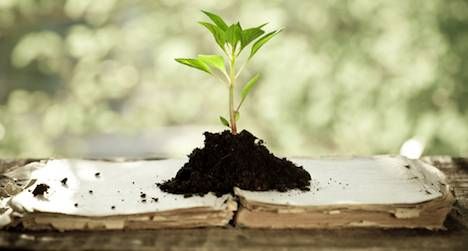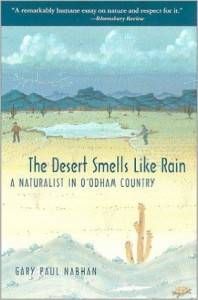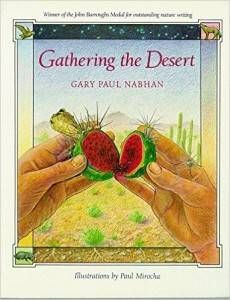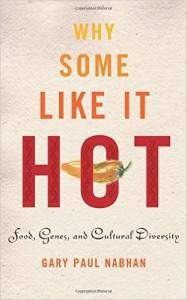
Reading Pathway: Ethnobiologist Gary Paul Nabhan
Years ago I was introduced to ethnobiologist, “internationally-celebrated nature writer, food and farming activist, and proponent of conserving the links between biodiversity and cultural diversity” Gary Paul Nabhan, through a class on writers from the Arab diaspora. I liked his books, from what I’d read, but the one thing that I will always remember, to my secret book-lovers shame, is that I really, really wanted to pilfer the copy of Gathering the Desert that my professor brought in a wonderful collegiate show-and-tell display. It is a beautiful book filled with hand-drawn renderings of desert plants and edibles, and is a continual delight to my gardener’s sensibility.
My obsession with Naban started from the Arab-American reading pathway, but he’s much more than that. Nabhan writes poetry, essays, nonfiction about food and culture and biodiversity and the slow-food movement, about growing and eating what’s natural to your time, place and genetic makeup, and why we should really pay attention to our landscape and what it’s telling us. It’s been particularly interesting to me as I go through long periods of drought in my native California, and try to keep a native plant garden growing using as much rainwater and minimal city water – I really don’t want the Golden State to end up in a Mad-Max landscaped world.
You need to read this, excellent, educational, engrossing nonfiction. So here are a couple of recommendations as diverse as his body of writing to get you started.
The Desert Smells Like Rain & Gathering the Desert
These are Nabhan’s first two books, ones I had to track down at all costs through used bookstore channels, because something about owning an old, used book just appeals to the poet in me.

Can you imagine that? Waiting for something and not just creating a system of workarounds? I couldn’t really either, but this book had me convinced and the outcome speaks for itself.
Along with the natural irrigation lesson, Nabhan tells tales about Papao harvesting the saguaro fruit of columnar cacti, and the wine feasts that accompany the ritual; about children growing up on the reservation; and making the earth good by your partnership with it.


Before gluten free was a universally accepted and understood way of life, Nabhan explored our genetic interactions with food and, literally, why some people like and can handle hot foods, and some can’t. Among other conversations. It’s not just about the right food for the right person’s genetic makeup, Naban also explores why some communities are prone to alcoholism, or immune to diseases like malaria and conditions like diabetes and headaches.
Reading Nabhan’s carefully researched stories about people, places and food, it all began to just make sense to me. Like when he writes in the introduction: “each ethnic cuisine reflects the evolutionary history of a particular human population as it responded to the availability of local plants and animals…to the prevailing histories of disease, droughts and plagues within each population’s homeland.” It takes the previous books, about people and plants and their joint survival in particular landscapes, to a whole new level.
Exploring island cultures on Hawaii, Java, Crete, Bali, where food traditions often remain unchanged due to the more static nature of island life, Nabhan writes cautionary tales of what happens when a people stray too far from their evolutionary homeland and diet, but also happy tales of sustaining foodie cultures through the centuries, and how old school celebrations with food are a driving force behind being just plain happy. And that’s something I can definitely understand.

















